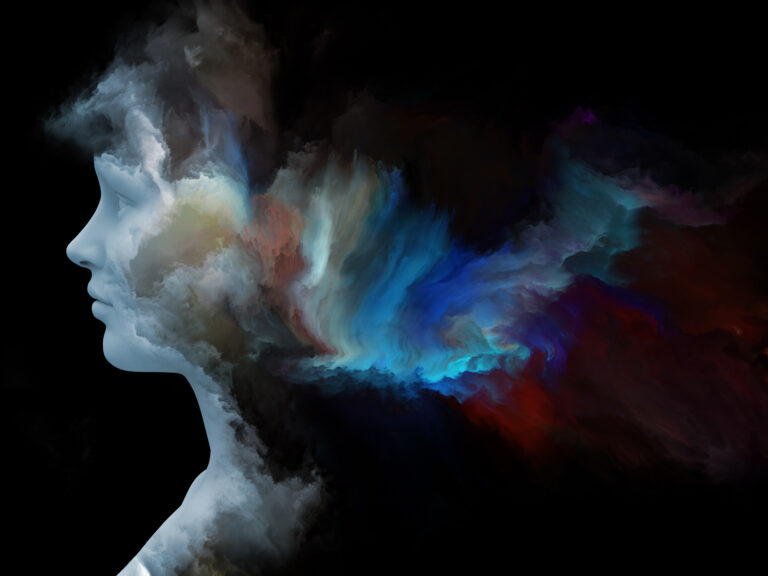Why we Dream – and understand depression
We humans all dream and animals too. So dreaming must be important. Joe Griffin, a founder of the Human Givens has unlocked why we dream. It will blow your mind.

Dreaming is why we are emotionally healthy
The theory of dreaming developed by Joe Griffin, with Ivan Tyrrell is the jewel in the crown of the Human Givens teaching.
You can buy their classic Why We Dream book.
This is my take on the HG sleep and dreaming ideas as I have used and explained them in my practice. I often quote Joe and Ivan’s words below – as they express it better than I ever could.
In a nutshell
Dreaming is Nature’s solution to the problems emotions cause animals and humans. An emotion can be thought of as an expectation or a physical preparing for action.
For example, a worry is an emotion felt in your body that is expecting action on your part to clear away a potential problem in the future, an anger is requiring action to defend yourself in some way and joy is the anticipation of a pleasure.
When the emotion is not acted upon it then stays in the body festering and filling you up and uncompleted. And what dreaming does every night is discharge that uncompleted emotion – by playing it out in metaphor.
Dreaming is the emotional flush toilet that frees yours emotions to serve you properly the next day.
No one has disproved this theory in over 20 years and no-one has bettered it in the sense of coming up with a better theory which explains more about human behaviour. In time and when the current holders of the competing theories leave their post and lose their influence, this dreaming explanation will have become the conventional wisdom.

Depression Therapy Online
How it Works
What to Expect
What is Depression
Escaping the NHS
Audio Therapy for Depression
REM sleep and Dreaming
Griffin’s insight was to realise that dreams act out our unexpressed emotional expectations (positive and negative) through the medium of metaphor. They are imaginary, metaphorical and perceptual experiences that occur primarily in REM sleep and they have the effect of preserving the integrity of our emotional responses.
Griffin called his dreaming theory the expectation fulfilment theory of dreams.
The essential points to understand about dreaming, which is the deepest trance state we enter are:
- Dreams are metaphorical translations of waking expectations
- Expectations which cause emotional arousal that is not acted upon during the day are the basis of dreams during sleep that night
- Dreaming then deactivates that emotional arousal by completing the expectation pattern metaphorically, freeing the brain to respond afresh to each new day
The clincher – dreams can explains depression
It has been known for years that depression has something to do with sleep. For example, experiments had shown quite clearly that if you deprive depressed people of REM sleep, then the depression lessened.
However, it was not until Joe Griffin undertook his ground breaking research into why we dream, that it became clear what a depression is and thus how it can be lifted.
It is a response to excessive ruminations and arousals, caused by a life which is not working. Those worries of course then require a large amount of REM dreaming in order that the arousals can be deactivated. But dreaming takes a lot of energy and the brain becomes too exhausted to complete the required dreaming and so the person wakes up in a state of exhaustion and de-motivation. A downward spiral begins – of worry, exhausting sleep, de-motivation and a growing incapacity to act effectively to get the initial problem solved and so get needs better met.
From this perspective it is also possible to understand psychosis and schizophrenia as dream phenomena which occur while a highly stressed person is awake – i.e. waking dreams.
Dream Interpretation
I can do no better than quote extensively from the Human Givens Institute.
This is for all those curious about their dreams, who want to understand a little more about what is going on and who are looking for something that they can relate to from their own experience.
The strangeness of dreaming, despite it being a regular biological function, encourages myths and fantastic explanation. Our bizarre night-time visitations seem so intensely real and full of meaning when we are having them but remain mostly unfathomable to our conscious mind and are usually quickly forgotten.
Through all historical periods humanity has puzzled over the meaning of remembered dreams and dream interpretation industries have flourished with promises that they can satisfy our natural longing to understand the mysterious ‘messages’ that dreams seem to carry.
A real guide to interpreting your own dreams
The ultimate test of the expectation fulfilment theory of dreaming is if you are able to use it in your life and, like any truly curious person, we would expect you to test the theory for yourselves. What follows are a few pointers as to how to do this.
The first requirement of course is to remember a dream. Dreaming is predominantly a right-brain, metaphorical activity and so the first step is to give voice to it straight away. Write it down, record it on tape or tell somebody about it quickly. By doing this you activate the parts of your brain that create narrative and memories, predominantly this is a left-brain activity. Otherwise the dream will quickly fade away.
Let’s assume you have remembered a dream. It is rare that a dreamer can see immediately what the dream was about and often, if you tell it to someone who knows you and who is aware of what was going on the previous day, that person will see the metaphorical connection quicker than you will.
There are three main reasons for this.
Firstly, on awaking one is still close to our metaphorical mind and that cannot easily ‘read’ itself.
Secondly, the arousal in you that produced the dream imagery is now de-aroused so it is harder for you to remember what you were worked up about the day before.
And, thirdly, we evolved to forget our dreams because we need to be able to distinguish between the metaphorical world of the REM dream state and the ordered reality we see when we are awake. So nature is working to draw a veil over them. (If we didn’t do this we would all suffer from permanent psychosis.
Once you have the story of a dream secure you can begin to self-reflect in order to grasp its meaning. To create the dream your brain is able to draw on memories and information from any part of your life: childhood events, people you’ve interacted with, or imagined interacting with, characters from books, films and TV programmes, news stories etc. The dream might include puns and wordplay.
The key to identifying what the dream was about is its emotion. The emotion in the dream story is always connected to what you felt but did not act upon the previous day. So you have to make a self-reflective journey back over the story of what happened to you the previous day to discover that connection. Not everyone finds this easy, particularly left-brained people, but those who succeed are able to internalise the truth of this theory and gain a precious element towards self-understanding.
Once you discover the connection to the aroused expectations all the characters and elements of the dream will reveal themselves.
Recurring dreams
If you find yourself having a recurring dream it is because you keep finding yourself in a similar situation, perhaps being bullied or tested in some way, and the brain is using the same or similar metaphor to dearouse you. Nature is very economical like that and wouldn’t keep inventing new metaphors to dearouse the same pattern of behaviour.
One Response
Comments are closed.